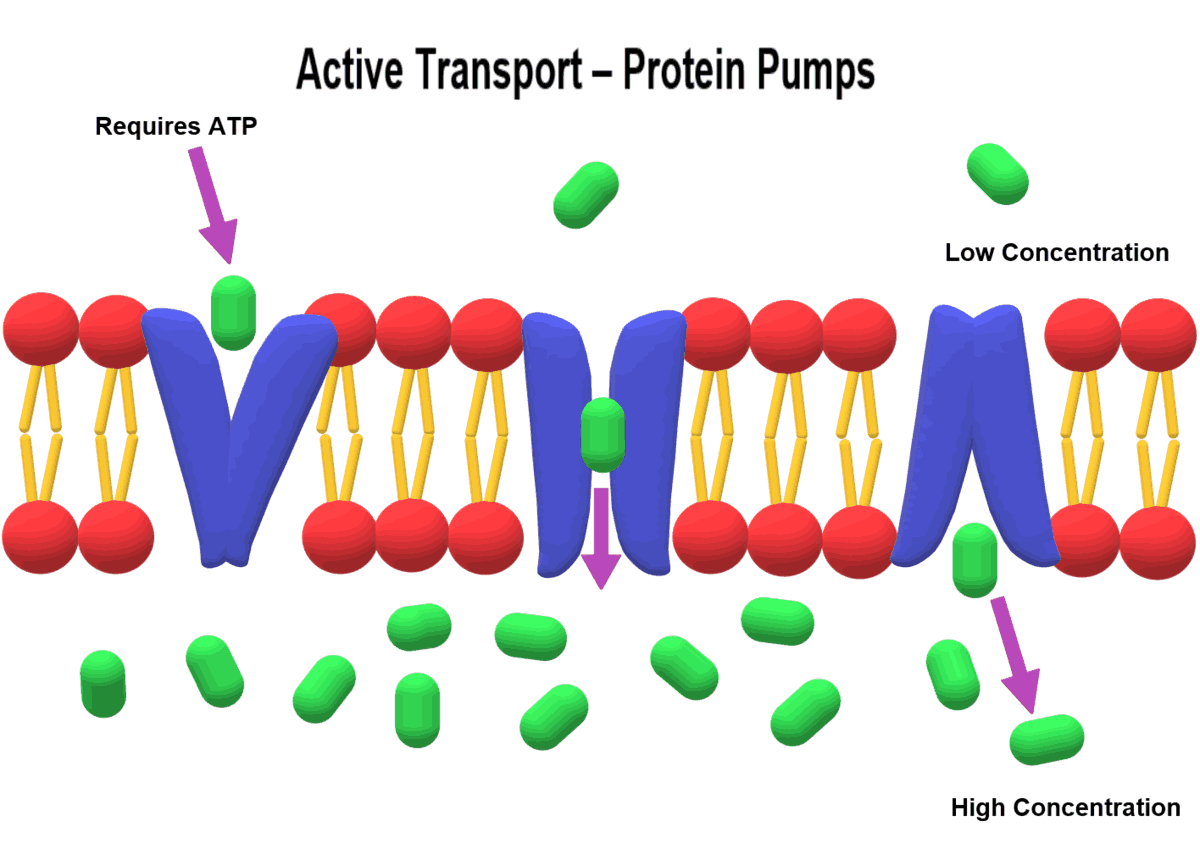Passive Transport: Diffusion & Osmosis
To keep cells functioning normally cells need to move particles in and out of the cell. Cells do this in order to get food and remove wastes.
Cells use one of two processes, passive or active transport to move particles across a membrane. Both processes of Passive and Active Transport involve the movement of molecules into and out of cells.
For Passive Transport:
- NO ENERGY REQUIRED!
- Particles naturally move from a high to low concentration. There are two types of passive transport – diffusion and osmosis.
a. Diffusion
Small particles naturally move from a high concentration to a low concentration. Many particles, like gases and liquids use diffusion to enter or exit a cell. Perfume smell traveling through a room is an example of diffusion.
Gases like oxygen and carbon dioxide require diffusion to enter or exit a cell. Stink bombs spreading and food dye in water are also examples. Small particles can either diffuse directly across the cell membrane, or may diffuse through transport proteins in the cell membrane (facilitated diffusion).
b. Osmosis
The diffusion of water from a high concentration to a low concentration across a cell membrane. Cells will shrink or expand depending on whether there is more water inside or outside of the cell to try to achieve equilibrium.
Examples are water traveling up a plant and water entering your cells
Equilibrium – Particles naturally move from a high to a low concentration toward equilibrium, a state in which particles are evenly distributed.
More on AmplifyGlobe
Active Transport
 USES ENERGY. Small particles need to also move from low concentrations to high c Read More
USES ENERGY. Small particles need to also move from low concentrations to high c Read More